The Longest Shortest Time
We Can’t Stop: Art Edition
For years, before I was a mom, my own mom had me saving toilet paper rolls, netting from fruit bags, and cereal boxes. Every few weeks I’d turn over my stash. And then my stash would go to my mom’s classroom and become beautiful children’s art. A giraffe, a mouse, a raging fire. (There was one kid obsessed with fire imagery.) Back when I was little and my mom didn’t have students yet, I got to be her student, constantly learning new art techniques. I still have vivid memories of finger painting on the kitchen floor, discovering the magic of a crayon resist, and acquiring the very useful skill of turning every mistake on your drawing into a rainbow. These days, when I visit my parents, Sasha gets to follow in my footsteps—to put on a smock and make art in Grammy’s studio.
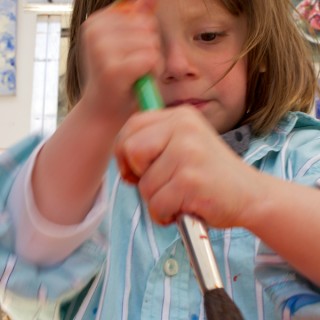
Something I’ve noticed, when I do art projects at home with Sasha, is that certain materials can be incredibly frustrating for her. Earlier this year I bought her a set of watercolors. The cheapest I could find, but 8 more colors than the set she’d used up. Number of colors is what matters at this age, I thought. Not quality. But it turned out I was wrong. Cheap meant the paints had very little pigment, and the colors came out so faint on the paper that Sasha would scream in frustration. Not that it necessarily takes much for her to scream. But, still. I didn’t want to give her another reason. I told my mom about this and she said, Oh, I have just the paints for you. I tried her recommendation and, yes, they they *are* just the paints I needed. I was so excited by these paints that I asked my mom to share a few of her favorite toddler art materials for a very special art edition of We Can’t Stop.
Take it away, Mom (a.k.a Leona Frank).
* * * * *
For toddlers, making art is really about process more than product. They eventually learn that there’s a connection between the movements they make with their tools and the resulting lines and shapes. But for now, certain tools really enhance their tactile experience of the process. Two- to four-year-olds love the experience of making marks with three types of tools: drawing tools, painting tools, and sculpting tools.
Drawing Tool
Crayons are serviceable, but I prefer the intense colors you can get from Cray-pas (oil pastels), by drawing with minimal pressure. And if you ask your toddler to press a little harder, he’ll get super bright colors. Chubby Cray-pas by Sakura are perfect for tiny hands. Try them on white paper or colored construction paper. Cray-pas will also look great on brown paper grocery bags or on recycled corrugated cardboard.
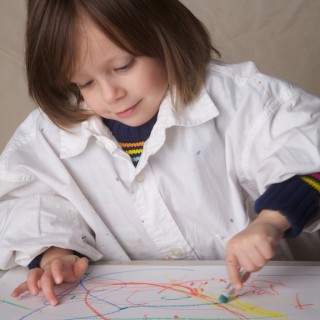
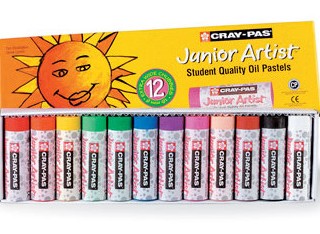
Painting Tool
If your toddler uses white drawing paper or white watercolor paper, you can turn his Cray-pas drawing into a a watercolor resist. Here’s how. First, draw with Cray-pas, making strong marks by pressing hard. Then gently brush wet watercolors over the lines. The oil in the pastels will resist the water in the paint, and the lines will magically pop through the watercolors. I like to use Prang watercolors because of their rich and immediate color intensity. The classic set comes with 8 colors, and for not much more you can get the 16-color set, which includes some really gorgeous hues.
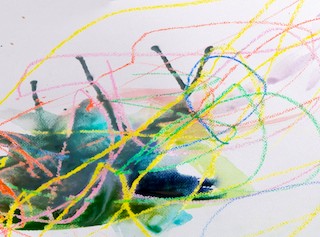
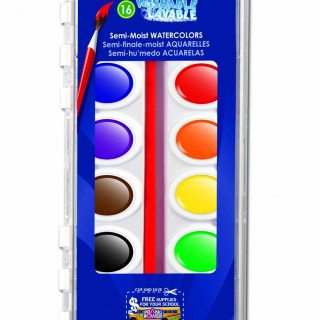
Hillary’s note: Sometimes we use this technique for birthday cards. I write a message + she paints over it. Link to our favorite student-grade watercolor pad above.
Sculpting Tool
Another material I recommend for toddlers is a sculpting product made by Crayola called Model Magic. It comes in several colors, including white. I like to use the white version if I’m planning to paint a sculpture after it’s dry. You’ll love how easily your kid can push, mush and form Model Magic, and to boot, it won’t make a mess. Pieces of Model Magic will stick to each other by simply pressing them together. Once your child is finished shaping her project, let her try pressing various colorful objects into the soft sculpture, for added whimsical texture. You can give her buttons, pipe cleaners, coffee stirrers or colorful cut plastic straws. Her sculpture will air dry in twenty-four hours, and if you like, she can paint it with watercolors, acrylics, tempera, or even color it with markers. The good news is, if a Model Magic masterpiece should come apart, it can be repaired with white glue.
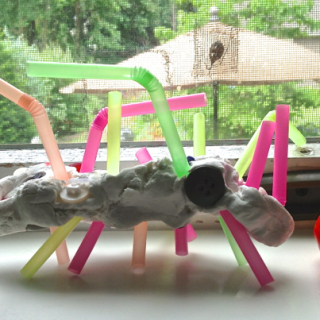
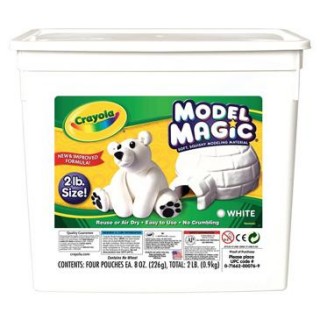
Hillary’s note: One weekend when we left Sasha at Grammy’s, she built “Cape Cod” out of Model Magic. Guess where we were that weekend?
Supporting the Process
Tell your toddler you enjoy watching her engage in the process of making art, or that you like the particular colors she’s using. When you make positive comments about her work, be specific, i.e. I love the way the blue paint wanders into the red, not, I really like that. Try to avoid asking, What is it? At this stage of development, toddlers are not generally able to represent recognizable things. Also, try not to be judgmental about surprising color choices or “weak spots” in your child/s work. Too often, I’ve witnessed unintentionally crushing remarks made by parents upon initially seeing a child’s efforts: You’ll have to fix that spot or What is that supposed to be? It’s far more valuable to ask your child, How did you make it? or Can you tell me about this painting? When you initiate conversation about their work, it demonstrates to children that you value the things they create, and the discussion will exercise their communication skills, too. Often what kids say about their art will not remotely match what it looks like to adults, but that’s fine. If your child is not interested in talking about his art, you can try it again at another time. Keep in mind, for your toddler, it was all about making the art, and the resulting image is simply a byproduct (however beautiful or muddy) of their experimentation and play. —LF
Photos: Richard Frank
* * * * *
Thanks, Mom!
This post is reminding me that I need to do more art at home with Sasha. I think I’ve been taking for granted that they do it with her at school, but it’s just not the same, is it?
So . . . how about you? What materials have provided the most satisfying creative experiences for your kids? Toddlers or otherwise?
As an Amazon Associate, The Longest Shortest Time earns a small commission from qualifying purchases.